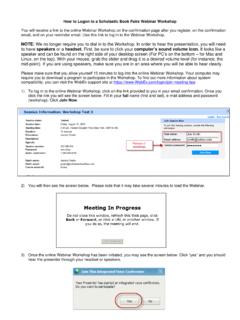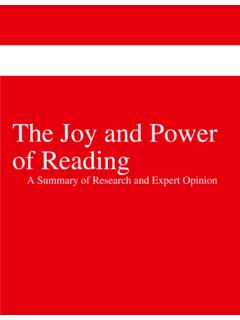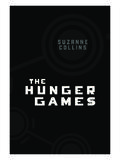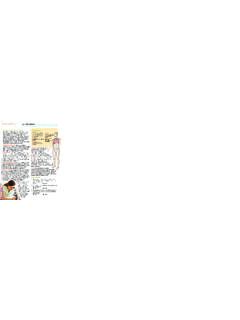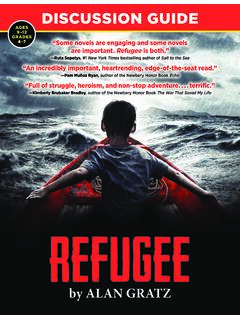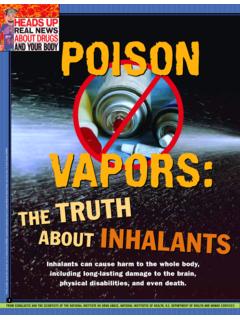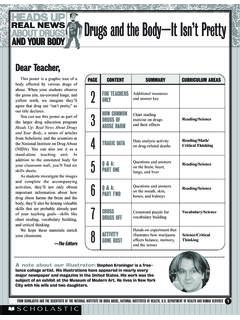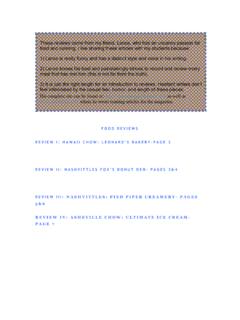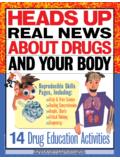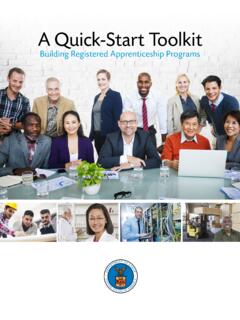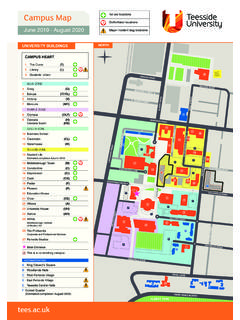Transcription of First Grade Reading Literature Question Stems - Scholastic
1 First Grade Reading Literature Question Stems Key Ideas & details Standard Question stem Ask and answer questions about key details in a text. Who are the characters this book? What do we know aboutthem? When did (event) happen? Where is that in the book? Why did (event) happen? How do you know? What does (character) think about (event)? How do you know? What was the big problem or event in this story? How did theysolve the problem? What do you think (character) will do differently next time? Retell stories, including key details , and demonstrate understanding of their central message or lesson. What happened at the beginning of the story? What happened in the middle of the story? What happened at the end of the story? If you tell a friend about this story, what will you say? What can you learn from (character)? Whas is the lesson you should learn from this story? Describe characters, settings, and major events in a story, using key details . Where does (character) live in this story?
2 What is the setting for this story? How do you know? Who is (character name)? What happened to him/her in the story? How is (character 1) different from (character 2)? Where doesthe book show or say that? How are (character 1) and (character 2) the same? Where does the book show or say that? Where is this story happening? How do you know? Who is talking in the story?Craft & Structure Standard Question stem Identify words and phrases in stories or poems that suggest feelings or appeal to the senses. What does this word mean? How do you know? What words in the story tell how (character) feels? What word in the story tells what sound _____ makes? What does (phrase) mean? Can you think of another word to use instead of _____? Are there any words that confuse you? Explain major differences between books that tell stories and books that give information, drawing on a wide Reading of a range of text types. What kind of story is this? What makes this story fiction/nonfiction?
3 Is this a real (nonfiction) story or a made-up (fiction) story? How do you know? Is this story realistic or fantasy? How do you know? What words or character actions help you know this is nonfiction? Identify who is telling the story at various points in a text. Who is telling this story? How do you know? Who is speaking in this part? Who are they talking to? Are the narrator and the author the same person? How do youknow?Integration of Ideas & Knowledge Standard Question stem Use illustrations and details in a story to describe its characters, setting, or events. What does this illustration show? How do the pictures make you feel? The story says (insert quote). Where do you see that happeningin the illustrations? Can you draw a picture to show what happened in the book?What detail does your picture show? What illustration shows the setting? What illustration shows the problem in the story? What illustration shows the main character? Not applicable for Literature Compare and contrast the adventures and experiences of characters in stories.
4 How is (character from book 1) like (character from book 2)? How would (character from a different story) have acted if theywere in this story? What does (character) do that a real person/animal cannot? How is this character like you? How are they different? Do you think (character from book 1) would be friends with(character from book 2)? First Grade Reading Information Question Stems Key Ideas & details Standard Question stem Ask and answer questions about key details in a text. Be the teacher! What questions would a teacher ask about this book? What evidence can you find to show _____? Who / What / Where / When / Why questions such as: o Who (action First landed on the moon)? Where does it tell you that in the book? o Where (do clown fish live)? Where does it tell you that in the book? How questions such as: o How do you know whales are mammals? o How is a lizard like an alligator? What is a different title for this book? What facts did you learn about (topic)?
5 Identify the main topic and retell key details of a text. What is the main idea of what you read? What details tell more about that idea? What is the topic of this text? What facts did you learn about (topic)? How are _____ alike? How are _____ different? Why did the author write this? What do you think the author wants the readers to know? Describe the connection between two individuals, events, ideas, or pieces of information in a text. We read (text 1) and (text 2). How are they the same? How are they different? What caused (event)? What effect did (event) have? How did the (person/animal) change? How are (person 1) and (person 2) alike? How are they different? Craft & Structure Standard Question stem Ask and answer questions to help determine or clarify the meaning of words and phrases in a text. How do the words and images show (vocabulary word)? What does the word _____ mean? How did the other words help you figure out the meaning?
6 Are there any words that confuse you? What categories would you put these in? What are examples of things that are _____? Know and use various text features ( , headings, tables of contents, glossaries, electronic menus, icons) to locate key facts or information in a text. Where is the table of contents? What does it show you? How do the images/diagrams help you understand the words? Why does the author put a heading on the sections? How does it help you? If you leave out this sentence/section how does it change the text? What does _____ mean? Can you use the glossary to find out? What text features (charts, diagrams, illustrations, bold words) help you understand the words? Distinguish between information provided by pictures or other illustrations and information provided by the words in a text. Why did the author write this? What extra information do you learn from the illustrations? How is the information in the chart/diagram different from the text?
7 What do you learn from the images that you didn t learn in the writing? Integration of Ideas & Knowledge Standard Question stem Use the illustrations and details in a text to describe its key ideas. What does this illustration/photo show? What idea is the picture trying to show? The text says (insert quote). Where do you see that happening in the illustrations? What does this diagram show? Can you explain how this works? What information do we get from this photograph? How does the picture/photo help you understand the words? What picture/diagram is missing? What would you like the text to include? Identify the reasons an author gives to support points in a text. What is the author telling about? Why does the author say (action) happens? What is the reason for (action)? How can _____ happen? Why did _____ happen? Can you find the reason the author thinks _____? Why does the author say _____? Identify basic similarities in and differences between two texts on the same topic ( , in illustrations, descriptions, or procedures).
8 How is (book 1) like (book 2)? How are they different? How is (picture/diagram) like (picture/diagram)? How are they different? Why does the author say _____ is _____? How are the (item animals, airplanes, ) in both texts alike? How are they different?
